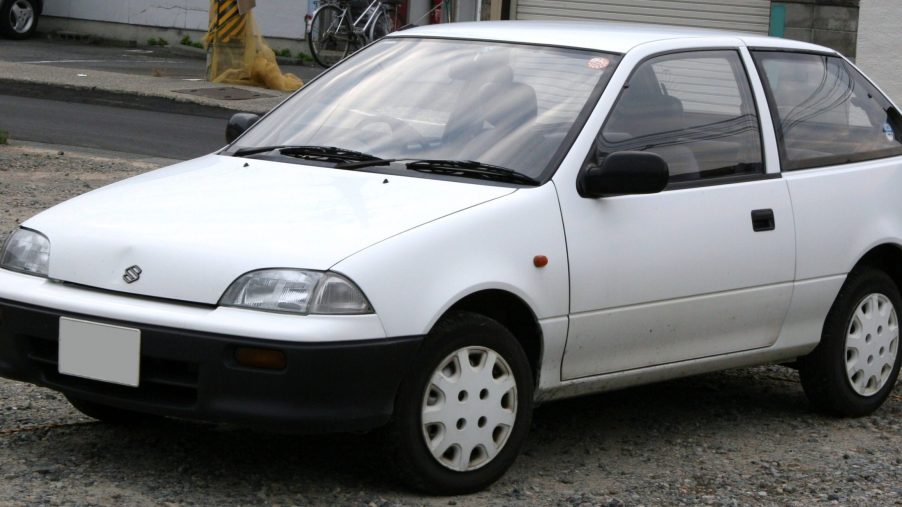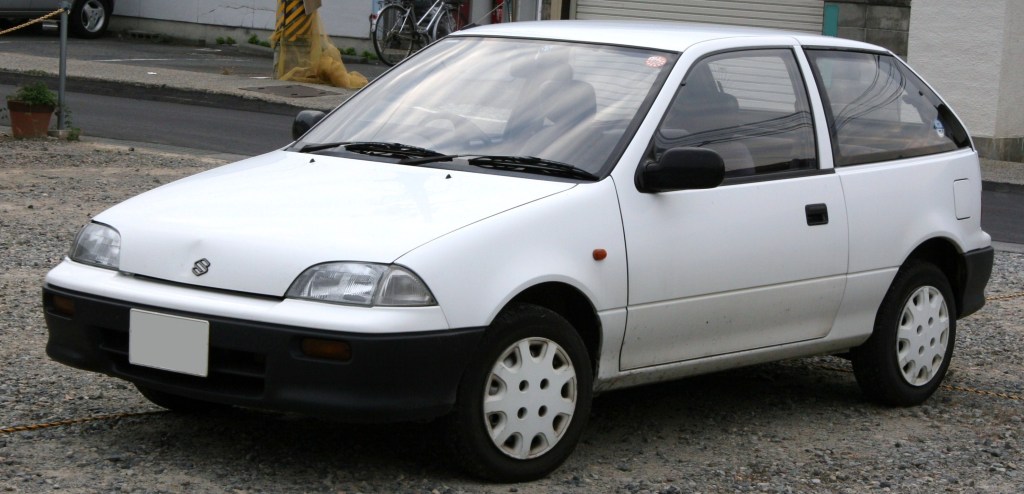
The Suzuki Swift Was, at One Point, the Most Fuel Efficient Car in America
The year is 1996. The sixth-generation Honda Civic has just been released. But this new model featured new engines that were slightly thirstier than the fifth generation. This left a tiny window where the Suzuki Swift could be called America’s most fuel-efficient car. And it’s the only time in history where Suzuki claimed the title.

The Suzuki Swift was America’s most fuel-efficient car according to the EPA
If you’re interested in numbers, take a peek at the 2020 EPA Automotive Trends Report. This is where I found the information for this particular article, and features other odd statistics you might enjoy. Regardless, on page 155, it’s clear to see that the 1996 Suzuki Swift managed to beat out the competition in terms of real-world fuel economy.
The EPA rated this little hatch at 43.3 miles per gallon. And with an MSRP of around $10,000 bucks back in the day (about $17,000 now), it was about as budget as you can get.
The Suzuki Swift had a couple of options, despite being a cheap little car. You could have it as a three-door hatchback, a four-door sedan, a five-door hatchback, and even a two-door convertible. And it came with the simplest motor you could imagine: one liter, three cylinders, 70 horsepower. That’s it. But that tiny engine gave the car impressive economy, even if getting to 60 took 16 seconds
But the story doesn’t end here. The Suzuki Swift wasn’t even the car’s real name, having originally been dubbed the Suzuki Cultus for Japan. But this little car has more names than you’d suspect.
The Suzuki Swift: otherwise known as the Geo Metro
Before you read this section, there’s one important thing you must remember: no matter how many names I throw at you, every one of them is just the Suzuki Cultus in disguise. Apart from minor cosmetic changes, they’re all the same car.
With that said, the name Geo Metro might ring a bell, GM’s ultra-budget compact car. But it doesn’t stop there. Other iterations of the car include the Suzuki Forsa, Chevrolet Sprint and Sprint Metro, Pontiac Firefly, Maruti 1000 (sold in India), Holden Barina (sold in Australia), and Subaru Justy. That’s a lot of names, but why?
The Suzuki Cultus, or Swift, or whatever you want to call it, wasn’t a car that’d put Suzuki on the map. It was a car Suzuki could sell to other manufactures that couldn’t figure out how to make cheap compacts. The first Suzuki Cultus rolled off the line in 1983, and was picked up by companies in Australia and India first. Then, in 1989, North America bought into the Cultus as well.
The first generation Geo Metro is, in truth, the second generation Suzuki Cultus. And this new, American compact is being sold while the Suzuki Swift is on American markets. Before that, from 1985 to 1987, the Suzuki Cultus was called the Chevy Sprint in the states, even though it’s all the same car.
If you’re having trouble wrapping your head around all this, then I’ve successfully confused you. Sorry about that. Long story short, the Suzuki Cultus has been around the block. And if we circle back to the EPA’s most economical car, it’s clear that Suzuki has had more wins than just the 1996 Swift.
The Cultus was the most fuel-efficient car in America for 12 nonconsecutive years

Whether you call it the Chevy (GM) Sprint, the Geo Metro, or the Suzuki Swift, the Cultus platform was rated the most economical car 12 years in a row. The moment it hit the states in 1985 as the Sprint, it beat out the infamous Honda Civic (which, by the way, only appears in the top spot six times). Then, from 1990 to 1998, the Geo Metro was king of the hill. Only to be beaten out by the Honda Civic in 1995 and the Suzuki Swift in 1996.
What’s more impressive, the Suzuki Cultus was the very last gas-powered car to be the most economical car in America. In 1999, the Volkswagen Jetta managed 41 mpg with its diesel engine. And then in 2000, everything changed with the birth of hybrids. Honda retook the throne with the Insight, and now electrics are kicking hybrids to the curb.
Maybe I’m just a big nerd, but these shifts in automotive history fascinate me. To think that the Suzuki Cultus managed to be the EPA’s most fuel-efficient car in the states for years is baffling, even if it was sold under a dozen different names. So while history may look back at this cheap, commuter car as a stain, I see it as a highlight. After all, no other brand has held that top spot for as long, even if cars get better fuel economy today than they did over 20 years ago.


